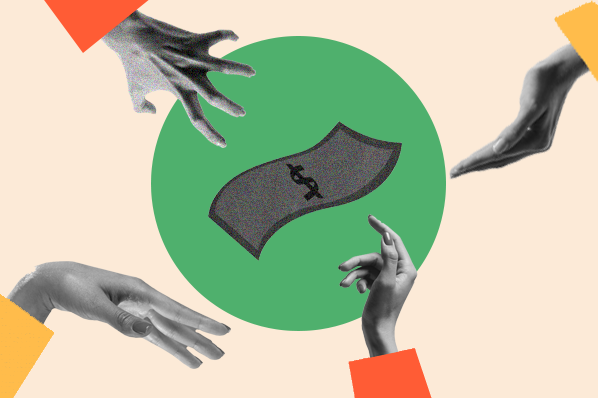As a solopreneur, you‘re not just the service provider — you’re also the entire sales team. Every pitch and negotiation is on you, with no manager for support.
Over time, I collected quotes that kept me going through rejections and slow periods. Sales is equal parts strategy and psychology — you need skills, but also something to steady you when confidence wavers. Here are the quotes that helped me reframe rejection and stay motivated.
Table of Contents
- Inspirational Sales Quotes
- Motivational Sales Quotes
- Positive Sales Quotes
- Prospecting Sales Quotes
- Closing Sales Quotes
- Direct Sales Quotes
- Funny Sales Quotes
Inspirational Sales Quotes
In high–stakes moments — a tough pitch, an ambitious quota — sometimes all you need is the right line to keep going.
I used to keep a note on my phone filled with the quotes that got me through imposter syndrome and client rejections. These quotes helped me reframe challenges and see the work differently.
The ones I’ve included here do the same and serve as reminders of why you chose this path and how to push forward when things feel uncertain.
- Our greatest weakness lies in giving up. The most certain way to succeed is always to try just one more time – Thomas Edison
- Learn from the mistakes of others. You can't live long enough to make them yourself. – Eleanor Roosevelt
- Always do your best. What you plant now, you will harvest later. – Og Mandino
- The meeting of preparation with opportunity generates the offspring we call luck – Tony Robbins
- Become the person who would attract the results you seek. – Jim Cathcart
- Don't watch the clock; do what it does. Keep going. – Sam Levenson
- Growth and comfort do not coexist. – Ginni Rometty
- What differentiates sellers today is their ability to bring fresh ideas. – Jill Konrath
- The way to get started is to quit talking and begin doing. – Walt Disney
- Either run the day or the day runs you. – Jim Rohn
- “I never lose. I either win or learn.” – Nelson Mandela
- “Success looks a lot like failure up until the moment you break through the finish line.” – Dan Waldschmidt
- “Today’s clients aren’t just skimming for the lowest price - they’re looking for the deep, meaningful connection that says you understand them.” - Simon Bowen
- “Not every call will connect. That's just the reality. Control what you can control - your list, your tone, your effort.” - Belal Batrawy
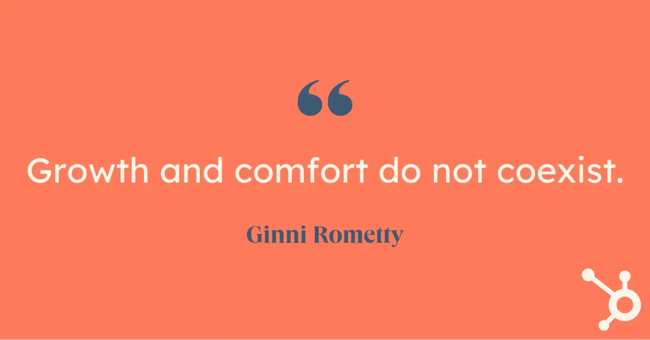
Motivational Sales Quotes
I keep a screenshot of my first $5,000 month as a freelancer on my phone.
Not because it was life-changing money, but because of what happened right before I hit that milestone. I'd just lost what I thought was going to be my biggest client yet, and I was seriously considering whether this whole freelancing thing was a mistake.
That night, I came across a quote that said “Motivation will almost always beat mere talent,” and something clicked. I wasn't the most talented writer out there, but I could choose to keep showing up.
The next morning, I sent out ten more pitches instead of wallowing, and one of those became my first major ongoing client.
These motivational quotes are reminders that persistence beats perfection every single time.
- “Don’t watch the clock; do what it does. Keep going.” – Sam Levenson
- “Success is not final, failure is not fatal: It is the courage to continue that counts.” – Winston Churchill
- “Believe you can, and you’re halfway there.” – Theodore Roosevelt
- “What you get by achieving your goals is not as important as what you become by achieving your goals.” – Zig Ziglar
- “It’s not who you are that holds you back, it’s who you think you’re not.” – Denis Waitley
- “Our greatest weakness lies in giving up. The most certain way to succeed is always to try just one more time.” – Thomas Edison
- “Always do your best. What you plant now, you will harvest later.” – Og Mandino
- “Become the person who would attract the results you seek.” – Jim Cathcart
- “Everything you’ve ever wanted is on the other side of fear.” – George Addair
- “Do not focus on numbers. Focus on doing what you do best.” – Cassey Ho
- “I had to make my own living and my own opportunity. But I made it! Don’t sit down and wait for the opportunities to come. Get up and make them.” – Madam C.J. Walker
- “There’s always something to suggest that you’ll never be who you wanted to be. Your choice is to take it or keep on moving.” – Phylicia Rashad
- “Doubt is a killer. You just have to know who you are and what you stand for.” – Jennifer Lopez
- “Setting goals is the first step in turning the invisible into the visible.” – Tony Robbins
- “The key to realizing a dream is to focus not on success but on significance — and then even the small steps and little victories along your path will take on greater meaning.” – Oprah Winfrey
- “Motivation will almost always beat mere talent.” – Norman Ralph Augustine
- “Change before you have to.” – Jack Welch
- “Human beings have an innate inner drive to be autonomous, self-determined, and connected to one another. And when that drive is liberated, people achieve more and live richer lives.” – Daniel Pink
- “Your network is your net worth.” – Porter Gale
- “The way to gain a good reputation is to endeavor to be what you desire to appear.” – Socrates
- “You can only become truly accomplished at something you love. Don’t make money your goal. Instead, pursue the things you love doing, and then do them so well that people can’t take their eyes off you.” – Maya Angelou
- “You can’t give up! If you give up, you’re like everybody else.” – Chris Evert
- “Life is short, and it’s up to you to make it sweet.” – Sadie Delany
- “Either run the day or the day runs you.” – Jim Rohn
- “There’s so much creativity in brokeness. Brokeness will have you making it work.” – Issa Rae
- "I got lucky because I never gave up the search. Are you quitting too soon? Or are you willing to pursue luck with a vengeance? – Jill Konrath
- “If you’re offered a seat on a rocket ship, don’t ask what seat! Just get on.” – Sheryl Sandberg
- “Don’t try to do everything by yourself, but try to connect with people and resources. Having that discipline and perseverance is really important.” – Chieu Cao
- “Hard work is about risk. It begins when you deal with the things that you'd rather not deal with: fear of failure, fear of standing out, fear of rejection. Hard work is about training yourself to leap over this barrier, drive through the other barrier. And after you've done that, to do it again the next day.” – Seth Godin
Are you more of a music person? Try listening to this motivational playlist. We also have a list of motivational speakers to help you complete your sales motivation education.
Positive Sales Quotes
The client call that changed everything for me happened on a Tuesday morning when I was having the worst week of my freelancing career. Three projects had fallen through, my biggest client was two months behind on payments, and I was seriously considering going back to a regular job.
But this potential client was different. Instead of focusing on what was wrong with their current content strategy, we spent the entire call talking about their vision and the impact they wanted to make. By the end, I felt energized instead of drained. That's when I realized the power of approaching sales from a place of possibility rather than desperation.
- “Success seems to be connected with action. Successful people keep moving. They make mistakes, but they don’t quit.” – Conrad Hilton
- “The only way to do great work is to love what you do.” – Steve Jobs
- “What you think, you become. What you feel, you attract. What you imagine, you create.” – Buddha
- “Just don’t give up what you’re trying to do. Where there is love and inspiration, I don’t think you can go wrong.” – Ella Fitzgerald
- “I attribute my success to this: I never gave or took any excuse.” – Florence Nightingale
- “Your attitude, not your aptitude, will determine your altitude.” – Zig Ziglar
- “I got lucky because I never gave up the search. Are you quitting too soon? Or are you willing to pursue luck with a vengeance?” – Jill Konrath
- “Quality performance starts with a positive attitude.” – Jeffrey Gitomer
- “If you don’t give up on something you truly believe in, you will find a way.” – Roy T. Bennett
- “Life shrinks or expands in proportion to one's courage.” – Anais Nin
- “Failure will never overtake me if my determination to succeed is strong enough.” – Og Mandino
- “What you lack in talent can be made up with desire, hustle, and giving 110% all the time.” – Don Zimmer
- “The most difficult thing is the decision to act, the rest is merely tenacity. The fears are paper tigers. You can do anything you decide to do. You can act to change and control your life; and the procedure, the process, is its own reward.” – Amelia Earhart
- “All great achievements require time.” – Maya Angelou
- “You’re not obligated to win. You’re obligated to keep trying to do the best you can every day.” – Marian Wright Edelman
- “Nothing is impossible; the word itself says ‘I’m possible!'” – Audrey Hepburn
- "The harder you work, the luckier you get.’’ – Mike Adenuga
- "Begin always expecting good things to happen." – Tom Hopkins
- “Sales are contingent upon the attitude of the salesman, not the attitude of the prospect.” – W. Clement Stone
- “The more you engage with customers, the clearer things become and the easier it is to determine what you should be doing.” – John Russell

Prospecting Sales Quotes
My worst prospecting phase happened when I was treating every potential client like a transaction waiting to happen. I‘d fire off generic emails, make pitches that sounded like everyone else’s, and wonder why my response rates were terrible.
Then I met another freelancer at a coffee shop who told me something that stuck: “Stop trying to sell to strangers and start building relationships with future collaborators.”
She was right. The moment I shifted from hunting for quick wins to genuinely connecting with people whose work I admired, everything changed.
I started following potential clients on LinkedIn, commenting thoughtfully on their posts, and reaching out with genuine curiosity about their challenges rather than a ready-made solution. My response rate tripled, but more importantly, the conversations became enjoyable instead of awkward. These prospecting quotes remind me that the best sales relationships start with an authentic human connection.
- “You don’t close a sale; you open a relationship if you want to build a long-term, successful enterprise.” – Patricia Fripp
- “Sales are contingent upon the attitude of the salesman—not the attitude of the prospect.” – W. Clement Stone
- “If you are not taking care of your customer, your competitor will.” – Bob Hooey
- “People don’t buy what you do; they buy why you do it.” – Simon Sinek
- “There are no secrets to success. It is the result of preparation, hard work, and learning from failure.” – Colin Powell
- “It’s not about having the right opportunities. It’s about handling the opportunities right.” – Mark Hunter
- “Knowing what must be done does away with fear.” – Rosa Parks
- “All business is personal... Make your friends before you need them.” – Robert L. Johnson
- “Solve customer problems and make sure that the customer is representative of a large market and then you will have a pretty good formula.” – Melanie Perkins
- “Success isn’t about how much money you make; it’s about the difference you make in people’s lives.” – Michelle Obama
- “The most common way people give up their power is by thinking they don’t have any.” – Alice Walker
- “If you want to make money, you have to help someone else make money.” – Russell Simmons
- “If we are going to be part of the solution, we have to engage the problems.” – Majora Carter
- “Instead of looking at the past, I put myself ahead twenty years and try to look at what I need to do now in order to get there then.” – Diana Ross
- “If you don’t risk anything, you risk even more.” – Erica Jong
- “High expectations are the key to everything.” – Sam Walton
- “No one can make you feel inferior without your consent.” – Eleanor Roosevelt
- “Keep your sales pipeline full by prospecting continuously. Always have more people to see than you have time to see them.” – Brian Tracy
- “If you are not moving closer to what you want in sales (or in life), you probably aren't doing enough asking.” – Jack Canfield
- “Focus on making your customers as successful as possible, and your success will always follow.” – Ian Koniak
- “Great sellers go into a meeting with multiple next-steps; this allows them to proactively respond if a plan does not unfold as planned.” – Tibor Shanto

Closing Sales Quotes
I was three months into conversations with a potential client, and honestly, I'd written it off. They kept asking questions, requesting revisions to the proposal, and bringing in new stakeholders. Classic signs of a deal going nowhere, right?
But instead of pushing for a decision, I sent them industry reports that might help, introduced them to other freelancers when they needed skills I didn't have, and genuinely invested in their success whether they hired me or not. The contract came through two weeks later — bigger than originally discussed.
That experience taught me that building trust and showing off value ensures the decision becomes obvious. When you're genuinely focused on helping someone succeed, the sale often closes itself.
- “You miss 100% of the shots you don’t take.” – Wayne Gretzky
- “Sales are not about selling anymore, but about building trust and educating.” – Siva Devaki
- “Don’t be afraid to give up the good to go for the great.” – John D. Rockefeller
- “Success is the sum of small efforts, repeated day in and day out.” – Robert Collier
- “The successful warrior is the average man, with laser-like focus.” – Bruce Lee
- “The key to successful leadership today is influence, not authority.” – Ken Blanchard
- “Never ever chase money. You should chase success because with success, money follows.” – Wilfred Emmanuel-Jones
- “Be passionate and move forward with gusto every single hour of every single day until you reach your goal.” – Ava DuVernay
- “When you undervalue what you do, the world will undervalue who you are.” – Oprah Winfrey
- “There have been so many people who have said to me, ‘You can’t do that,’ but I’ve had an innate belief that they were wrong. Be unwavering and relentless in your approach.” – Halle Berry
- “A goal is a dream with a deadline.” – Napoleon Hill
- “Winning isn’t everything, but wanting to win is.” – Vince Lombardi
- “Knowing is not enough; we must apply. Wishing is not enough; we must do.” – Johann Wolfgang Von Goethe
- “No matter how many customers you have, each is an individual. The day you start thinking of them as this amorphous ‘collection’ and stop thinking of them as people is the day you start going out of business.” – Dharmesh Shah
- “You can’t just sit there and wait for people to give you that golden dream. You’ve got to get out there and make it happen for yourself.” – Diana Ross
- “Winning is great, sure, but if you are really going to do something in life, the secret is learning how to lose. Nobody goes undefeated all the time. If you can pick up after a crushing defeat, and go on to win again, you are going to be a champion someday.” – Wilma Rudolph
- “Don‘t settle for average. Bring your best to the moment. Then, whether it fails or succeeds, at least you know you gave all you had. We need to live the best that’s in us.” – Angela Bassett
- “You just can't beat the person who never gives up.” – Babe Ruth
- “I thrive on obstacles. If I‘m told that it can’t be done, then I push harder.” – Issa Rae
- “The best way to sell something: Don’t sell anything. Earn the awareness, respect, and trust of those who might buy.” – Rand Fishkin
- “It can take a lot of “no’s” before you find someone who needs your product, but they are out there.” – Daniel Disney
- “The secret of getting ahead is getting started.” – Mark Twain
- Companies should be selling ideas more than benefits. Sell Ideas. Not stuff.” – Aaron Ross
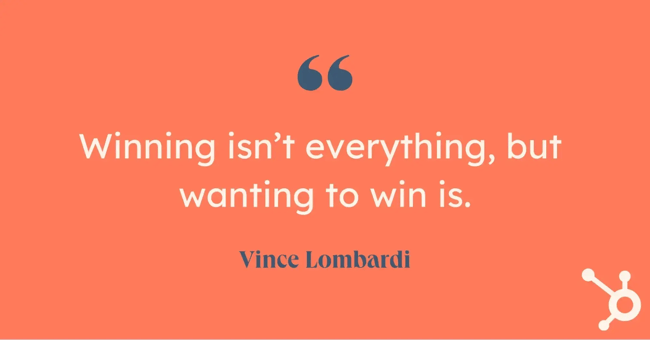
Direct Sales Quotes
The best sales advice I ever received came from a client who rejected my first proposal. Instead of just saying no, she told me exactly why: “You're dancing around what you actually do. Just tell me how you're going to solve my problem.”
She was right. I had been so worried about sounding pushy that I‘d become vague and confusing. That feedback changed how I approach every sales conversation. No more beating around the bush or trying to ease into the value proposition. Now I lead with clarity: here’s what I do, here‘s how it helps you, and here’s what working together looks like.
These quotes capture that no-nonsense energy that cuts right to the core and gets straight to the point.
- “I have stood on a mountain of no’s for one yes.” – B. Smith
- “Treat objections as requests for further information.” – Brian Tracy
- “Selling is essentially a transfer of feelings.” – Zig Ziglar
- “The aim of marketing is to know and understand the customer so well the product or service fits him and sells itself.” – Peter Drucker
- “Make a customer, not a sale.” – Katherine Barchetti
- “What differentiates sellers today is their ability to bring fresh ideas.” – Jill Konrath
- “I have never worked a day in my life without selling. If I believe in something, I sell it, and I sell it hard.” – Estée Lauder
- “Leadership belongs to those who take it.” – Sheryl Sandberg
- “Beware of monotony; it's the mother of all deadly sins.” – Edith Wharton
- “You have to learn to keep your eyes on an ultimate goal. If you lose sight of that goal, you have to get out.” – Hamdi Ulukaya
- “I‘d rather regret the things I’ve done than regret the things I haven't done.” – Lucille Ball
- “The way to get started is to quit talking and begin doing.” – Walt Disney
- “You can never leave footprints that last if you are always walking on tiptoe.” – Leymah Gbowee
- “How you sell is more important than what you sell.” – Andy Paul
- “The story is the heart of the sale.” – Matthew Pollard
- “You have to drop your sales mentality and start working with your prospects as if they've already hired you.” – Jill Konrath
- “Stop selling. Start helping.” – Matt White
- “Approach each customer with the idea of helping him or her to solve a problem or achieve a goal, not of selling a product or service.” – Brian Tracy
- “It's no longer about interrupting, pitching and closing. It is about listening, diagnosing and prescribing.” – Mark Roberge
- “Customers don't care at all whether you close the deal or not. They care about improving their business.” – Aaron Ross
- “You need to go beyond the script to get more clients on board.” – Dale Carnegie

Funny Sales Quotes
Some days, you need to laugh to keep from crying. I learned this during a particularly brutal stretch where I pitched twelve potential clients in two weeks and heard back from exactly zero of them.
Instead of spiraling into self-doubt, I started collecting the absurd stories other freelancers shared in online communities. There was the client who wanted a “viral blog post” but refused to share it anywhere. The prospect who asked for a proposal, then ghosted for six months before randomly asking if the price was still valid.
Sometimes the best medicine for sales frustration is remembering that we're all just humans fumbling through this weird dance of commerce together.
These funny quotes help me keep perspective when the process gets ridiculous—which, let‘s be honest, happens more often than we’d like to admit.
- “I love my job only when I’m on vacation.” – Catherine Pulsifer
- “Learn from the mistakes of others. You can't live long enough to make them yourself.” – Eleanor Roosevelt
- “People don’t like to be sold, but they love to buy.” – Jeffrey Gitomer
- “A sense of humor is part of the art of leadership, of getting along with people, of getting things done.” – Dwight D. Eisenhower
- “If you think it’s expensive to hire a professional, wait until you hire an amateur.” – Red Adair
- “Confidence is 10 percent hard work and 90 percent delusion.” – Tina Fey
- “There’s never any guarantee that anyone will like you. So if anyone likes you at all, you’ve already won.” – Chelsea Handler
- “Big shots are only little shots who keep shooting.” – Christopher Morley
- “Cherish forever what makes you unique, cuz you’re really a yawn if it goes.” – Bette Midler
- “Whatever you are, be a good one.” – Abraham Lincoln
- “The road to Easy Street goes through the sewer.” – John Madden
- “If they don’t give you a seat at the table, bring a folding chair.” – Shirley Chisholm
- “Statistics suggest that when customers complain, business owners and managers ought to get excited about it.” – Zig Ziglar
- “Timid salesmen have skinny kids.” – Zig Ziglar
- “Business opportunities are like buses; there's always another one coming.” – Richard Branson
- “Customers are like teeth. Ignore them, and they'll go away.” – Jerry Flanagan
- “My sales objective is to get my prospects to look at my products the same way I look at bacon.” – Kurt Mortensen
- “Even if you are on the right track, you'll get run over if you just sit there.” – Will Rogers
- “Every morning in Africa, a gazelle wakes up. It knows it must outrun the fastest lion or it will be killed. Every morning in Africa, a lion wakes up. It knows it must run faster than the slowest gazelle, or it will starve. It doesn't matter whether you're the lion or a gazelle – when the sun comes up, you'd better be running.” – Christopher McDougall
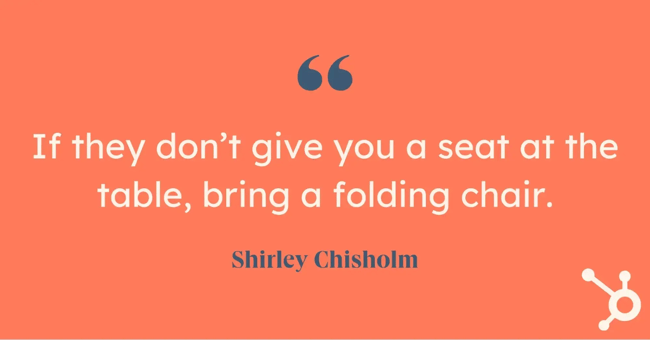
May these motivational sales quotes be your driving force.
Building a freelance business taught me that motivation is something you have to cultivate daily. These quotes have carried me through late nights revising proposals, awkward follow-up calls, and those inevitable moments when everything feels harder than it should be.
The truth is, sales success comes down to showing up consistently, even when you don‘t feel like it. Whether you’re pitching your first client or your hundredth, these words can remind you why you started and how far you've already come.
Save the ones that resonate, share them with fellow entrepreneurs, or just bookmark this page for those days when you need a reminder that persistence pays off.
Editor's note: This post was originally published in December 2014 and has been updated for comprehensiveness.
Sales Motivation


%20(1).png)
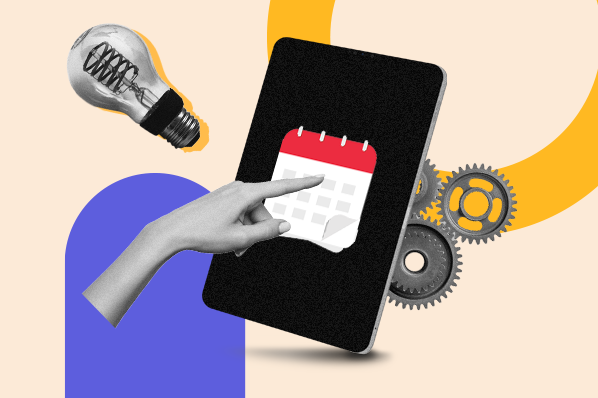
.webp)


